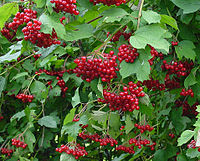
Photo from wikipedia
Life has always found a way to preserve itself. One strategy that has been developed for this purpose is sexual reproduction. In land plants, the gynoecium is considered to be… Click to show full abstract
Life has always found a way to preserve itself. One strategy that has been developed for this purpose is sexual reproduction. In land plants, the gynoecium is considered to be at the top of evolutionary innovation, since it has been a key factor in the success of the angiosperms. The gynoecium is composed of carpels with different tissues that need to develop and differentiate in the correct way. In order to control and guide gynoecium development, plants have adapted elements of pre-existing gene regulatory networks (GRNs) but new ones have also evolved. The GRNs can interact with internal factors (e.g. hormones and other metabolites) and external factors (e.g. mechanical signals and temperature) at different levels, giving robustness and flexibility to gynoecium development. Here, we review recent findings regarding the role of cytokinin-auxin crosstalk and the genes that connect these hormonal pathways during early gynoecium development. We also discuss some examples of internal and external factors that can modify GRNs. Finally, we make a journey through the flowering plant lineage to determine how conserved are these GRNs that regulate gynoecium and fruit development.
Journal Title: Journal of Experimental Botany
Year Published: 2019
Link to full text (if available)
Share on Social Media: Sign Up to like & get
recommendations!